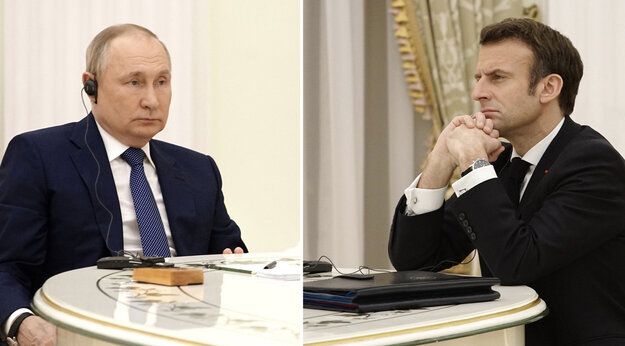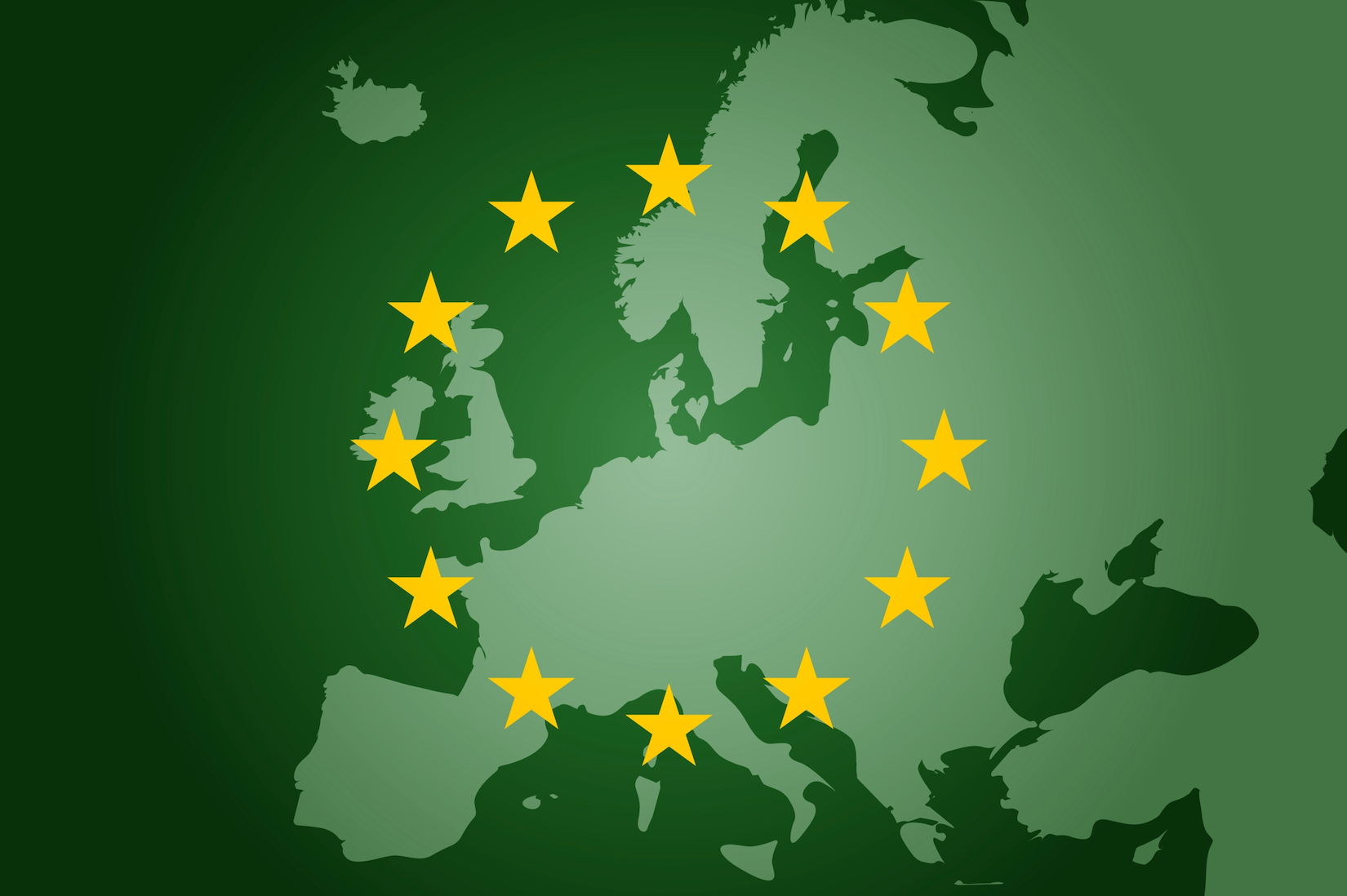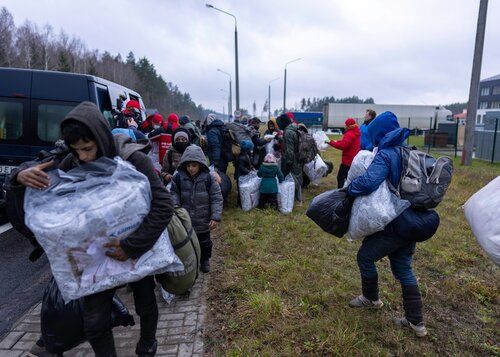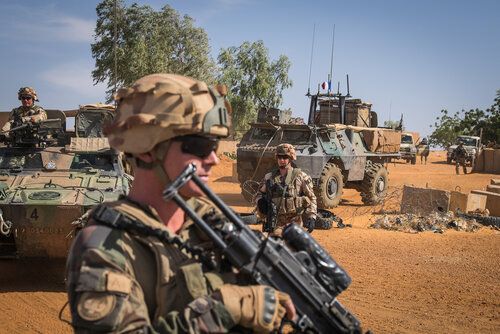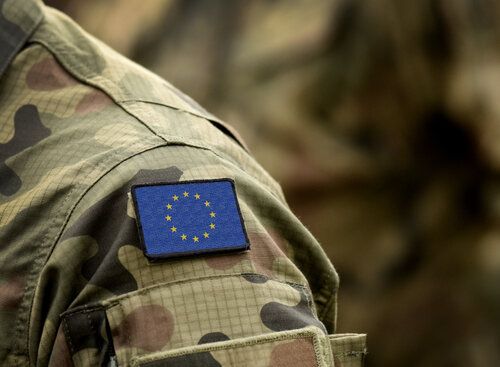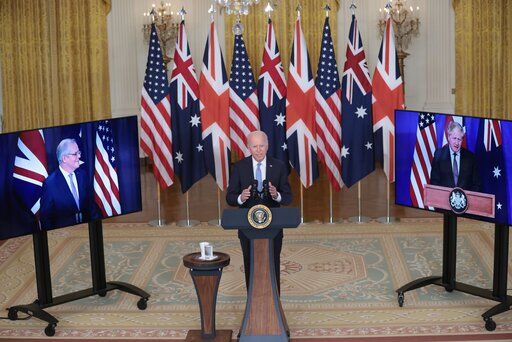Defense is the third largest area of expenditure in the French national budget at 8 percent, after debt repayment (18 percent) and schools (11 percent). It is therefore one of the major issues for future budgetary decisions. While military expenditure has remained at between 30 and 40 billion euros since 1990 (in constant 2020 euros), in reality, it has become an exercise in smoke and mirrors, disguising (among other things) the cost of modernization—financed by the reduction in the size of the armed forces—and the continuous decline of defense spending as a percentage of GDP until 2015. The deterioration in the geopolitical environment, as a result of the renewed strategic competition between great powers and a continuing high level of terrorist threat, presents decision-makers in France with a highly sensitive decision: whether to accept a downgrading of France’s defense apparatus and a reduction in its room for maneuver, or to pursue the resurgence that started in 2015, which would entail a significant financial commitment in a time of budgetary constraints.
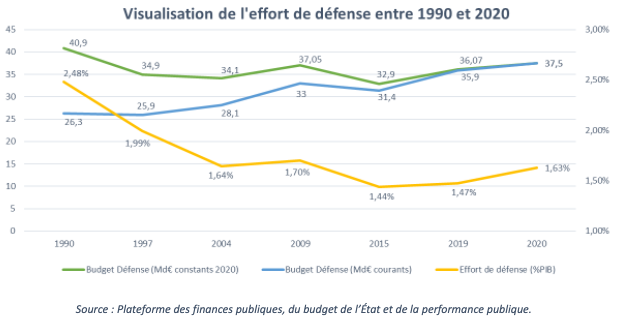
A Dangerous Erosion of Defense Capabilities
The post-Cold War lull and the professionalization of the armed forces from 1996 onward have seen the size of the armed forces reduced by half. As major programs such as the Leclerc tank, multipurpose or air-defense frigates, and the Rafale multirole fighter came into service, fleet sizes have continued to shrink. Since 1990, the armed forces have reduced the number of heavy tanks by 83 percent, first-rate frigates by 29 percent, and fighter aircraft by 61 percent. This enforced “slimming regime” has also had an impact on personnel numbers, which have fallen from nearly 450,000 in 1997 (230,000 of whom were conscripts) to barely 200,000 today. This fall has largely been caused by the shift to a fully professional army and the implementation of the General Review of Public Policies by President Sarkozy, which led to the cutting of 54,000 additional jobs during the Military Planning Act (LPM) for 2008–2014.
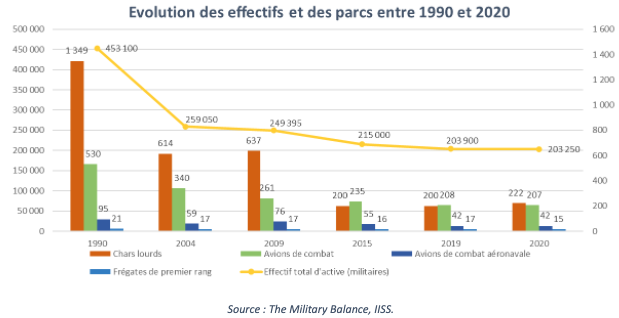
Honest Operational Contracts
While the French armed forces have been continuously engaged in operations abroad since 2001, an erosion of their capabilities has led them to adapt their plans so that they can deliver their operational contracts. The two approaches used have been the pooling of resources, which has resulted in an overcommitment of forces and equipment wearing out prematurely, and economizing on support, which has resulted in reduced technical availability of equipment, exacerbating temporary interruptions to capabilities.
Even though the LPM for 2014–2019 was amended after the terrorist attacks of 2015, bringing the spending decline to a halt, and the LPM for 2019–2025 allowed the capability trajectory to be stabilized by reducing the budgetary gap accumulated over years of underfunding, the situation of the armed forces nonetheless remains fragile. The process of strengthening the forces’ resilience starts with drafting honest operational contracts. The existing contracts have been drafted in such a way as to allow simultaneous engagements to be dealt with, but without enough personnel, stocks of equipment, or munitions to do the job, because these resources are pooled across several different operational contracts. Hence, the same forces can be mobilized to conduct operations, protect territory, and ensure deterrence.
A Resurgence in Jeopardy
The coming years will be full of budgetary challenges: the fallout from the Covid-19 crisis for the French state’s general budget will come on top of the additional expenditure caused by adjustments to current military programming (such as new spending on space, digital technology, and family support). These additional expenses reinforce the current uncertainties about the way forward after 2023 expressed in the LPM for 2019–2025. The main efforts to strengthen the army model with annual budget increments of 3 billion euros are focused on the post-2023 period. Increments of this size seemed ambitious even when the Act was being voted on.
This investment is, nevertheless, essential, given the commitment to renewing the components of the nuclear deterrent (the financial requirements for this work are estimated at around 25 billion euros between 2019–2023, representing 12.5 percent of the defense budget), and given also the need to launch major programs like the Future Combat Air System, the new generation aircraft carrier, and the Main Ground Combat System in order to maintain the operational superiority of French forces up to 2035–2040 in response to the threats identified by the 2021 update to the Strategic Review.
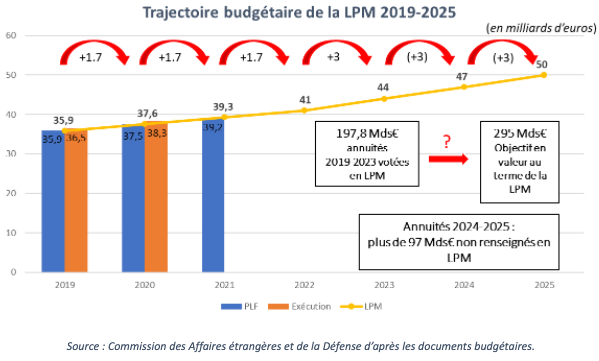
Undervalued Financial Benefits
The main aim of developing an independent, high-performance Defense Technological and Industrial Base is, of course, to maintain French strategic autonomy. But its financial benefits should not be ignored. The French Defense Ministry’s expenditure on equipment generates fiscal returns for the state which will reach 48 percent within two years. For example, the renewal of the ocean component of the nuclear deterrent alone should generate 10,000 jobs over twenty years. Budgetary planning should take account of added value created in France and the long-term socioeconomic impact for the French state and local authorities. If the French state needs to contemplate increasing defense spending to over 2 percent of GDP, to deal simultaneously with the deterioration in the geostrategic context and the renewal of the nuclear deterrent, then budget construction should take returns on defense investment into account.

